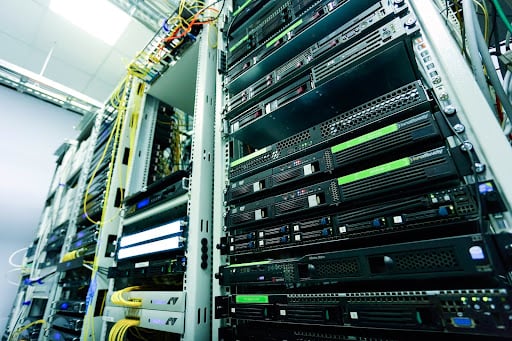Maintain a Consistent Server Environment Aisle by Aisle

Your team needs the right tools at all times to keep projects moving in a fully optimized data center. The wrong conditions in the server environment can cause equipment to overheat, become damaged, wear out more quickly, and ultimately lead to projects falling behind. These issues raise alarms within an operation's budget, as the CEO will want to understand why energy and equipment costs are high.
A proactive strategy for a consistent server environment can ensure that projects stay on time and the budget remains under control. Three main issues impacting data centers are energy waste, temperatures, and humidity. Careful monitoring and control of these conditions for every server aisle can reduce maintenance needs and improve equipment efficiency.
Reducing Energy Consumption and Waste
Data centers are extremely energy intensive, consuming roughly 10x to 50x the energy in the building for every floor, according to the U.S. Department of Energy. While the servers have to operate during business hours, other functions in the space, such as lights, can be turned off when there are no employees or IT staff in the room.
Often, lighting in data centers is left on throughout the day, even when there is other ambient light available. By using an occupancy sensor, you can automate the lighting without relying on the employees to switch off the lights when necessary, lowering energy usage. MSX Series Occupancy Sensors are ceiling mounted to have an unobstructed detection of large areas and can be adjusted with coverage delay of up to 2000 square feet. These sensors also can detect when there is ambient light or daylight present as they have an adjustable time delay.
Controlling Humidity Levels
If the humidity is too high in the server environment, the moisture in the air will gradually condense on the servers. Condensation may corrode internal components, trip circuit breakers, and cause damage to circuits. Low humidity can create a separate list of problems — such as electrostatic discharge. Recommended ASHRAE standards for humidity levels should be between 40% to 60% relative humidity, according to the U.S. Environmental Protection Agency's (EPA) Energy Star.
Humidity control is easier with wall-mountable sensors like our HW2 Series Humidity Sensors, which help control the humidity at the zone level. This multi-sensor platform comes with 3 interface options while also having flexible system compatibility. With high accuracy and an interchangeable element, the HW2 can be easily adjusted with a time delay and coverage sensitivity.
These sophisticated sensors come with large terminals directly on the baseplate as well as snap on covers so they can be quickly installed.
Maintaining Ideal Temperatures
When operating data centers, many companies believe that having the temperatures set at the lowest level possible will prolong the life of the equipment. Temperatures in these cases might be set at an extremely cool level, such as 55°F. Yet these low temperatures cause the building manager to run the HVAC system constantly, especially during hotter days. Constantly running the heating and cooling systems can raise energy usage above the company budget.
According to Energy Star, server inlet temperatures can be set at 68°F to 77°F. These temperatures put less strain on HVAC systems while allowing the servers to still run at capacity without having operating issues. A project manager can invest in a wall-mounted TW2 Series Temperature Sensor and a TD Duct Temperature Sensor to help monitor the heat levels in their data center and keep the room conditions consistent.
Our TW2 temperature sensors are available in both analog and protocol options with 3 different interface choices. The analog system doesn't require calibration as it has flexible output options of 4 to 20mA, 0 to 5Vdc, or 0 to 10Vdc. The protocol option gets rid of wiring and analog inputs by having network configurations to save on costs. You can select the fan speed or temperature control easily to always maintain the server environment.
A duct-mounted temperature is also a wise investment, to directly monitor the conditioned air as it moves throughout the building. By understanding the conditioned air in the ducts, you can more quickly adjust the temperatures to keep servers within recommended levels. Veris TD sensors are easy to install for this purpose, and also corrosion resistant.
Creating an Ideal Server Environment for Operations
Ensure your operations run efficiently while staying within the company's budget with efficient management of resources in your server room. Occupancy and temperature sensors can help you save on energy and reduce waste while prolonging the life of the equipment with a consistent environment. Humidity and temperature sensors can prevent equipment damage and alert you quickly when conditions are outside of their desired range. Shop now for the best products for your servers.





